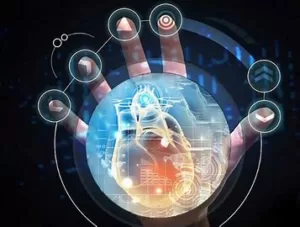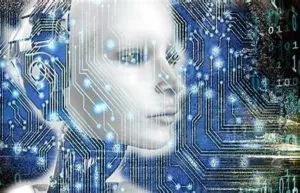
The role of AI in criminal justice reform: how technology is helping us address systemic issues in the justice system
-
Table of Contents
- Introduction
- The Impact of AI on Criminal Justice Reform: How Automated Decision-Making is Changing the System
- Exploring the Potential of AI to Reduce Racial Bias in Criminal Justice
- The Use of AI to Improve Access to Legal Representation for Low-Income Individuals
- Examining the Role of AI in Enhancing Police Accountability and Transparency
- Investigating the Use of AI to Streamline the Criminal Justice System and Reduce Court Backlogs
- Conclusion
“Unlocking Justice: AI-Powered Solutions for a Fair and Equitable Criminal Justice System”
Introduction
The criminal justice system is a complex and often flawed system that has been in need of reform for many years. Artificial intelligence (AI) has the potential to revolutionize the criminal justice system by providing more accurate and efficient ways to identify and address systemic issues. AI can be used to analyze data, identify patterns, and make predictions that can help reduce bias and improve decision-making. AI can also be used to automate certain processes, such as sentencing and parole decisions, which can help reduce the amount of time and resources needed to process cases. AI can also be used to improve the accuracy of criminal records and provide better access to legal resources. In short, AI has the potential to revolutionize the criminal justice system and help us address systemic issues in a more effective and equitable way.

The Impact of AI on Criminal Justice Reform: How Automated Decision-Making is Changing the System
The impact of artificial intelligence (AI) on criminal justice reform is undeniable. Automated decision-making is transforming the criminal justice system, from the way cases are investigated to the way sentences are determined. AI is being used to identify suspects, predict recidivism, and even determine the length of sentences.
AI-driven facial recognition technology is being used to identify suspects in criminal cases. This technology uses algorithms to compare images of suspects to a database of known criminals. It can also be used to identify people in surveillance footage. This technology has been used to identify suspects in a variety of cases, from robberies to homicides.
AI is also being used to predict recidivism. Algorithms are used to analyze data from past criminal cases to determine the likelihood of a person committing a crime in the future. This technology is being used to inform decisions about parole and probation. It can also be used to determine the length of sentences.
AI is also being used to automate the process of determining sentences. Algorithms are used to analyze data from past criminal cases to determine the appropriate sentence for a particular crime. This technology is being used to ensure that sentences are consistent and fair.
The impact of AI on criminal justice reform is undeniable. Automated decision-making is transforming the criminal justice system, from the way cases are investigated to the way sentences are determined. AI is being used to identify suspects, predict recidivism, and even determine the length of sentences. This technology is helping to ensure that the criminal justice system is fair and equitable.
Exploring the Potential of AI to Reduce Racial Bias in Criminal Justice
The criminal justice system has long been plagued by racial bias, leading to disparate outcomes for people of color. This has been especially true in the United States, where African Americans are disproportionately represented in the prison population. In recent years, there has been a growing recognition of the need to address this issue, and artificial intelligence (AI) has emerged as a potential solution.
AI has the potential to reduce racial bias in criminal justice by automating certain processes and providing more objective decision-making. For example, AI-based algorithms can be used to analyze data from police stops, court proceedings, and sentencing decisions to identify patterns of racial bias. AI can also be used to identify and flag potential cases of racial discrimination in the criminal justice system.
In addition, AI can be used to improve the accuracy of predictive policing models. Predictive policing models are used to identify areas where crime is likely to occur, and they have been criticized for perpetuating racial bias. AI-based models can be used to reduce bias by taking into account factors such as socioeconomic status, education level, and past criminal history.
Finally, AI can be used to improve the accuracy of risk assessment tools used in the criminal justice system. Risk assessment tools are used to determine the likelihood of a person committing a crime in the future, and they have been criticized for perpetuating racial bias. AI-based models can be used to reduce bias by taking into account factors such as age, gender, and past criminal history.
Overall, AI has the potential to reduce racial bias in criminal justice by automating certain processes, providing more objective decision-making, and improving the accuracy of predictive policing and risk assessment tools. While AI is not a panacea for racial bias in criminal justice, it can be an important tool in the effort to create a more equitable system.
The Use of AI to Improve Access to Legal Representation for Low-Income Individuals
The use of artificial intelligence (AI) to improve access to legal representation for low-income individuals is a promising development in the legal field. AI technology has the potential to revolutionize the way legal services are provided, making them more accessible and affordable for those who need them most.
AI can be used to automate certain aspects of the legal process, such as document review and legal research. This can reduce the amount of time and money spent on legal services, making them more accessible to those with limited resources. AI can also be used to provide legal advice and guidance to those who may not be able to afford a lawyer. AI-powered chatbots can provide basic legal advice and help individuals understand their rights and options.

AI can also be used to improve the accuracy and efficiency of legal services. AI-powered algorithms can be used to analyze large amounts of data and identify patterns that can help lawyers make better decisions. AI can also be used to automate certain tasks, such as document review and legal research, which can reduce the amount of time and money spent on legal services.
Finally, AI can be used to improve access to legal representation for low-income individuals by providing them with access to legal resources and information. AI-powered chatbots can provide basic legal advice and help individuals understand their rights and options. AI-powered algorithms can also be used to analyze large amounts of data and identify patterns that can help lawyers make better decisions.
The use of AI to improve access to legal representation for low-income individuals is a promising development in the legal field. AI technology has the potential to revolutionize the way legal services are provided, making them more accessible and affordable for those who need them most. By automating certain aspects of the legal process, providing legal advice and guidance, and improving the accuracy and efficiency of legal services, AI can help ensure that everyone has access to the legal representation they need.
Examining the Role of AI in Enhancing Police Accountability and Transparency
The use of Artificial Intelligence (AI) in policing has the potential to revolutionize the way police departments operate and enhance police accountability and transparency. AI can be used to automate mundane tasks, such as data entry and analysis, freeing up officers to focus on more important tasks. AI can also be used to detect patterns in data that may indicate potential criminal activity, allowing police to be more proactive in their investigations.
AI can also be used to improve police accountability and transparency. AI-powered facial recognition technology can be used to identify suspects and track their movements, allowing police to better monitor their activities. AI can also be used to analyze police body camera footage, providing an objective record of police interactions with the public. This can help to ensure that police are following proper procedures and that any misconduct is quickly identified and addressed.
AI can also be used to improve the accuracy of police reports. AI-powered natural language processing can be used to automatically generate reports from audio recordings, eliminating the need for manual transcription. This can help to ensure that reports are accurate and complete, and that any discrepancies are quickly identified and addressed.
Finally, AI can be used to improve the public’s trust in the police. AI-powered chatbots can be used to provide the public with information about police procedures and policies, helping to build understanding and trust. AI can also be used to analyze public sentiment, allowing police departments to better understand the needs and concerns of their communities.
In conclusion, AI has the potential to revolutionize the way police departments operate and enhance police accountability and transparency. By automating mundane tasks, improving the accuracy of police reports, and improving public trust, AI can help to ensure that police departments are operating efficiently and effectively.
Investigating the Use of AI to Streamline the Criminal Justice System and Reduce Court Backlogs
The criminal justice system is a complex and often inefficient system that is in need of reform. In recent years, the use of artificial intelligence (AI) has been proposed as a way to streamline the system and reduce court backlogs. AI has the potential to revolutionize the criminal justice system by automating certain processes, improving accuracy, and reducing the amount of time needed to process cases.
AI can be used to automate certain processes in the criminal justice system, such as the identification of suspects and the analysis of evidence. AI can be used to quickly and accurately identify suspects by analyzing facial recognition data, fingerprints, and other biometric data. AI can also be used to analyze evidence, such as DNA samples, to determine the likelihood of a suspect’s involvement in a crime. This can help to reduce the amount of time needed to process cases and reduce court backlogs.
AI can also be used to improve accuracy in the criminal justice system. AI can be used to analyze large amounts of data to identify patterns and trends that may be missed by human investigators. This can help to reduce the number of false convictions and ensure that justice is served. AI can also be used to identify potential biases in the criminal justice system, such as racial or gender bias, and help to ensure that all individuals are treated fairly.
Finally, AI can be used to reduce the amount of time needed to process cases. AI can be used to automate certain tasks, such as the analysis of evidence and the identification of suspects, which can help to reduce the amount of time needed to process cases. AI can also be used to identify potential conflicts of interest and ensure that cases are handled in a timely manner.
The use of AI in the criminal justice system has the potential to revolutionize the system and reduce court backlogs. AI can be used to automate certain processes, improve accuracy, and reduce the amount of time needed to process cases. By utilizing AI, the criminal justice system can become more efficient and ensure that justice is served.

Conclusion
The role of AI in criminal justice reform is an important one. AI can help us address systemic issues in the justice system by providing more accurate and timely data, improving decision-making, and reducing bias. AI can also help us identify and address potential areas of injustice, such as racial disparities in sentencing. As AI technology continues to evolve, it will become increasingly important to ensure that it is used responsibly and ethically to ensure that justice is served.







